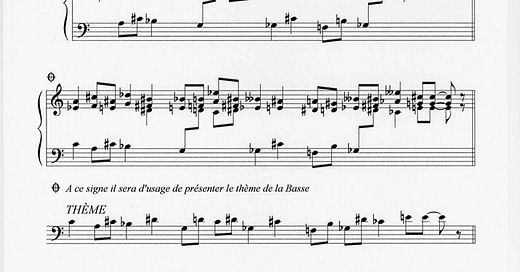043 - Another Sub Atomic Circus
I’m a stickler for using the correct accidentals even if it might cause some to have to pause momentarily to figure it out. One time I stopped attending a choral music seminar because the presenter insisted we were NEVER to use double sharps or double flats. I interrupted him to clarify “So if I have a G# followed by or proceeded by a note 1/2 step below as a leading tone, I’m not supposed to use f double sharp?” to which he said no, I should use G natural. I thought this was an insult to the abilities of singers and did a disservice to the music as the whole idea of accidentals is inflection, and a singer will inflect an f double sharp in that context differently than they would a G natural, not to mention spelling it wrong like that has harmonic repercussions. That was the last seminar by that presenter I attended.
Some composers enjoy abusing accidentals for fun, Erik Satie being a good example with his composition Vexations, indicated to be repeated 840 times:
Here the note spelling is deliberately chosen to be as confounding as possible, making the piece difficult to memorize, despite its simplicity. Incidentally, John Cages’s famous silent composition, 4’33” was inspired by Satie’s note suggesting before repeating this music 840 times one should engage in a grand silence with serious immobilities.
The point of this is when I composed today’s piece I realized in order to conform to correct note spelling I would need a triple sharp to correctly notate a note a 1/2 step below a G double sharp, something my composition teachers would’ve insisted I avoid. I was hoping ABC would have the ability to display the rarely used triple sharp accidental (#x) but sadly this is one of this instances where ABC shows its limitations. Had I prepared this in Finale I could’ve added as many sharps (or flats) to the note as needed.





